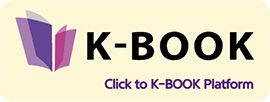|
Current State of Korean Publishing Overview of Korean Publishing Market
2017.6.30
To translate and publish Korean books, it is important to understand the current status of the local publishing market. This section provides macro-data and statistics on the Korean publishing industry from the perspective of publishing experts.
The unusually high ratio of education books in the market
According to “Survey of Publishing Industry in 2016” conducted by the Publication Industry Promotion Agency of Korea, the size of the Korean publishing market is 4,278 billion KRW (excluding 1 trillion KRW of the magazine market). Approximately 59% of it consists of education books for children and adolescents. Countries with such a high proportion of education books are quite rare. This phenomenon in the publishing industry reflects the Korean social culture of high population density and college enrollment rate and the fierce competition for places at prestigious universities. In particular, this environment has resulted in education cartoons, which has become a special category in the Korean publishing industry as well as raises awareness in Asia and overseas markets.
Promotion of online bookstores and unique style of transactions
Currently, there are about 5,000 active publishing companies (more than 50,000 publishing companies are registered to administrative authorities) and 2,116 bookstores (offline stores). Similar to other areas, the proportion of publishing activities and markets is high in Seoul and the metropolitan area (about half of the total population resides in the Seoul metropolitan area). In addition, online bookstores account for more than 30% of the total publishing market, which is considerably higher than the OECD average. In cities, people can usually receive orders from online bookstores the following day.
Stakeholders in the publishing industry, including government and associations
Government intervention is higher in the Korean publishing industry compared with other countries. In terms of law, there are not only copyright and library laws, but also the Publishing Culture Industry Promotion Act, Reading Culture Promotion Act, and specialized public organizations, such as the Publication Industry Promotion Agency of Korea and Literature Translation Institute of Korea. They support publishing activities, reading culture, and international exchange.
Written by Won-Keun Baek (President, Books & Society Research Institute) Won-Keun Baek (President, Books & Society Research Institute) |
Pre Megazine
-

Export Prospects of Korean Books
VOL.1
2017.06 -

Current State of Korean Publishing
VOL.1
2017.06 -

Korean Bestsellers Trend in June
VOL.1
2017.06 -

Export Prospects of Korean Books
VOL.2
2017.07 -

South Korea's publishing industry
VOL.2
2017.07 -

South Korea's July Bestsellers
VOL.2
2017.07 -

Export Prospects of Korean Books
VOL.3
2017.08 -

South Korea's digital publishing industry
VOL.3
2017.08 -

South Korea's August Bestsellers
VOL.3
2017.08 -

Export Prospects of Korean Books
VOL.4
2017.09 -

Changes in South Korea's reading demographics
VOL.4
2017.09 -

South Korea's September Bestsellers
VOL.4
2017.09 -

Export Prospects of Korean Books
VOL.5
2017.10 -

South Korea's Printing Industry
VOL.5
2017.10 -

South Korea's October Bestsellers
VOL.5
2017.10 -

Export Prospects of Korean Books
VOL.6
2017.11 -

South Korea's Key Publishing Related Organizations
VOL.6
2017.11 -

South Korea's November Bestsellers
VOL.6
2017.11 -

Export Prospects of Korean Books
VOL.7
2017.12 -

South Korea's Major Online Bookstores
VOL.7
2017.12 -

South Korea's December Bestsellers
VOL.7
2017.12 -

Export Prospects of Korean Books
VOL.8
2018.01 -

South Korea's budding publishing experts
VOL.8
2018.01 -

South Korea's January Bestsellers
VOL.8
2018.01 -

Guadalajara Book Fair 2017 Book from Korea
VOL.8
2018.01 -

Export Prospects of Korean Books
VOL.9
2018.05 -

South Korean Government Policies to Shore Up the Publishing Industry
VOL.9
2018.05 -

South Korea's April Bestsellers
VOL.9
2018.05 -

Overseas Publication Grants
VOL.9
2018.05 -

Overseas Publication Grants
VOL.10
2018.06 -

Aggregate data as of the fifth week of May
VOL.10
2018.06 -

South Korea’s Digital Publishing Contents Platform
VOL.10
2018.06 -

Export Prospects of Korean Books
VOL.10
2018.06 -

South Korea's June Bestsellers
VOL.11
2018.07 -

Overseas Publication Grants
VOL.11
2018.07 -

South Korea’s Library Status
VOL.11
2018.07 -

Export Prospects of Korean Books
VOL.11
2018.07







